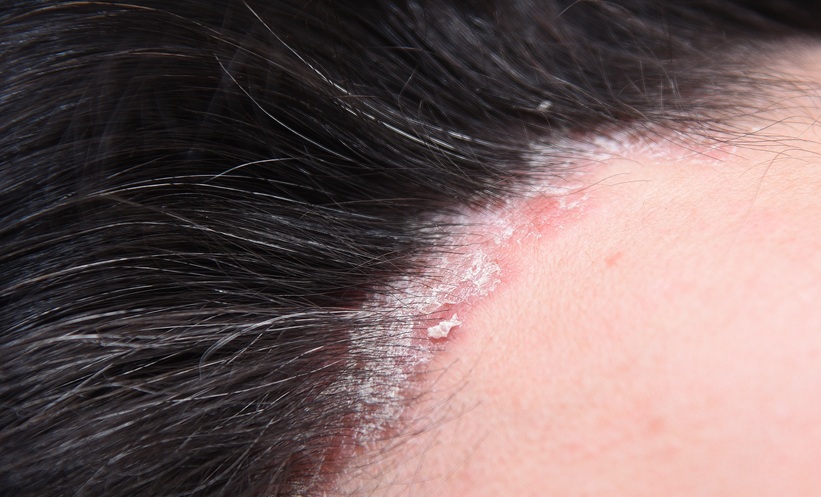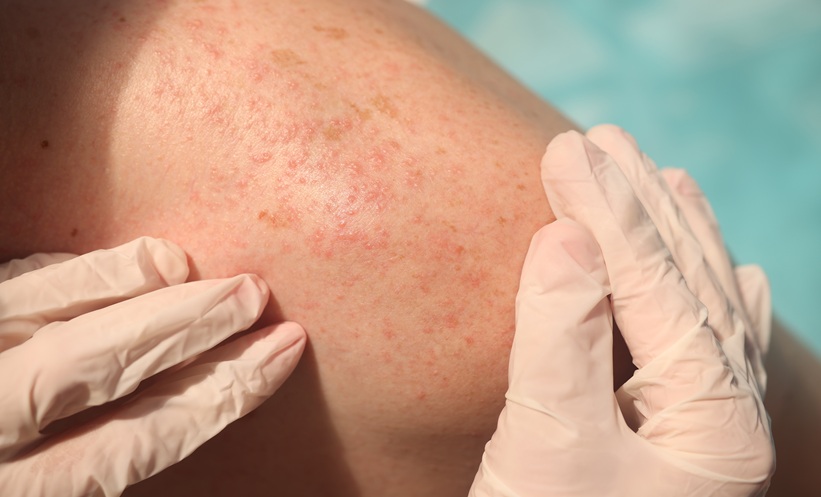Erythema multiforme (EM) is an acute, immune-mediated skin condition that infection or medication can trigger. It occurs most frequently in young adults, particularly male, and is categorised into major (with mucosal involvement) and minor forms.1 Usually the rash ameliorates by itself over several weeks; however, sometimes treatment may be required depending on the severity of the outbreak.1 Thus, the aim of this study was to describe the epidemiological, clinical, and therapeutic features of EM among a sample of a Tunisian hospital’s patients.
This was a retrospective study based on medical records of patients diagnosed with EM who presented to the authors’ dermatology department between 2008 and 2018. The study group consisted of 32 patients (21 females and 11 males) with a mean age of 26.3 years (age range: 16.0 months to 59.0 years). Thirty percent of patients were children. Typical targetoid lesions with acral distribution were observed in 18% of patients. The eruptions were mostly located on the upper limbs (83%), followed by the lower limbs (66%), trunk (20%), and face (16%). Bullous EM was observed in 6 patients, in whom the presence of target lesions and skin biopsy allowed the distinction of EM from other bullous dermatoses. Only 11 patients had major EM. Oral mucosa was affected in the 11 cases, genital lesions were found in 3 cases, and ocular lesions in 6 cases. Nine patients (30%) had recurrence of the disease, of whom 50% reported a history of previous herpes simplex virus (HSV) infection. Two patients received prophylactic treatment with acyclovir to treat recurrent EM caused by HSV. In two cases, an infection with Mycoplasma pneumoniae was incriminated, with severe mucosal involvement and pulmonary infection; one case was diagnosed by serology and the other by PCR. Drug-associated EM was reported in 12% of cases (the underlying drugs were amoxicillin in 3 cases and oxacillin in 1 case). In 21% of patients, the authors could not identify a possible aetiology. Nine patients were treated with systemic steroids. Seven patients diagnosed with EM were hospitalised.
EM is a rare skin condition easily diagnosed based upon clinical appearance, but sometimes hard to distinguish from other dermatoses such as Stevens–Johnson syndrome, fixed drug eruption, urticaria, and Rowell’s syndrome. In some cases, skin biopsy is needed to confirm the diagnosis. EM continues to present many unanswered questions, especially in determining the causal agent. In the present study, HSV was incriminated in almost half of the cases (47%) and was seen to influence recurrence of this disease (50%). EM caused by M. pneumoniae seems to be characterised by severe manifestations with prominent mucosal involvement, leading to its consideration in some recent publications as a new syndrome.2 Antibiotics (particularly amoxicillin) were associated with some cases of EM in this analysis, whereas other drugs were reported in previous studies including nonsteroidal anti-inflammatory drugs, sulfonamides, and antiepileptics.1 The management of minor EM involves symptomatic treatment with topical steroids, and recurrent EM associated with HSV may be treated with prophylactic antiviral therapy.1 Hospitalisation and treatment with oral corticosteroids and antibiotics were required to treat EM due to M. pneumonia.1,2 It has also been suggested that steroids can be used to treat major EM to decrease the duration and severity of symptoms.1








